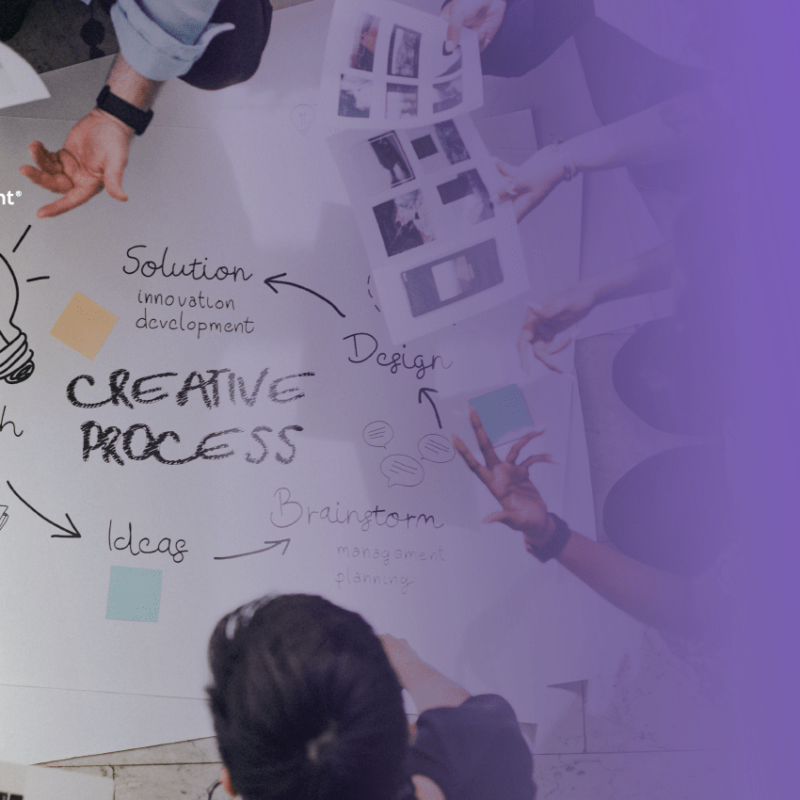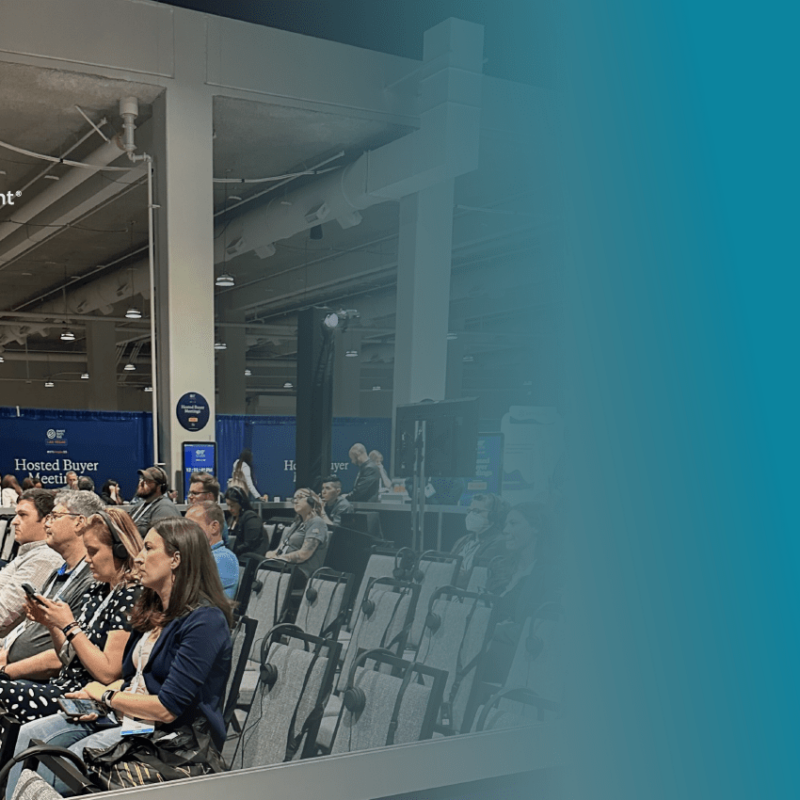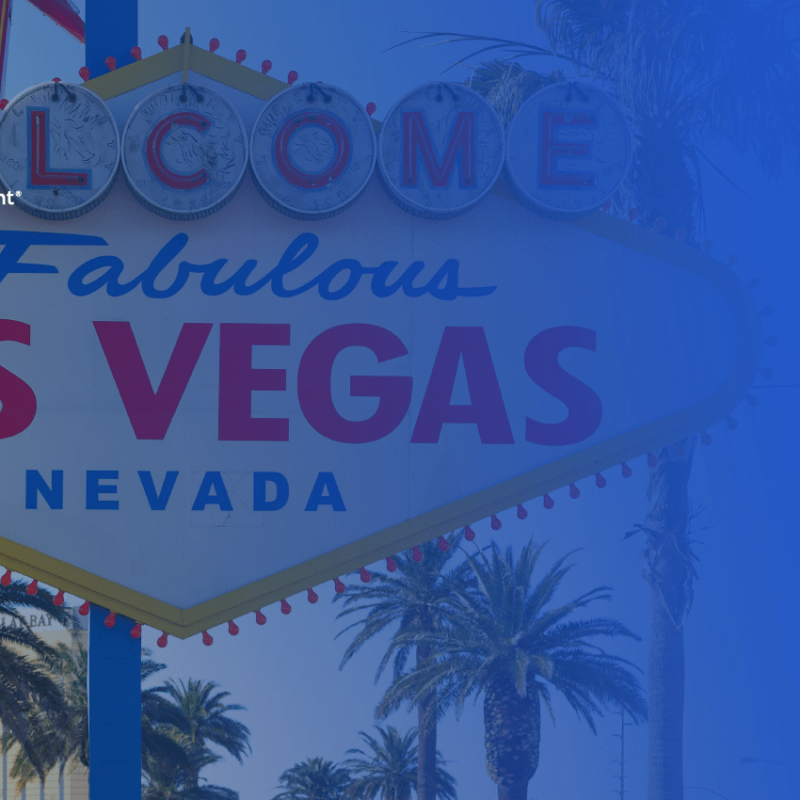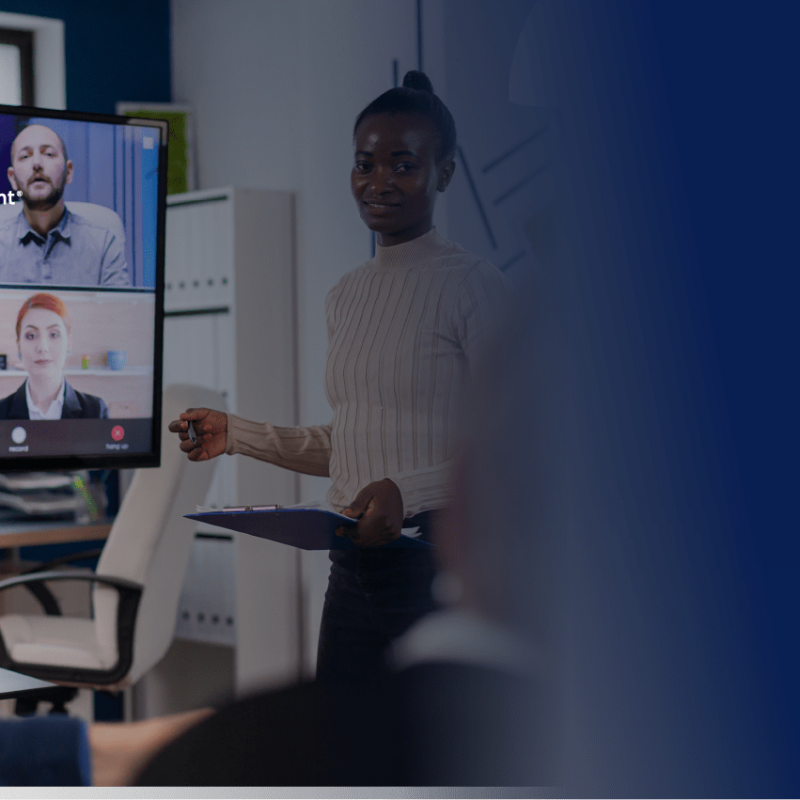Event Participant’s Onboarding Checklist
Just as we experience onboarding when we start using a new app—receiving emails, guided tours, and tips to ensure we’re comfortable and can navigate the app easily—event onboarding serves a similar purpose but in the context of events.
When you sign up for an event, whether a conference, workshop, or online seminar, the process you go through to become familiar and comfortable with the event’s structure, goals, and expectations is what we call event onboarding. This blog explores the ins and outs of event onboarding, providing insights and guidelines to enhance your event experiences. Whether you’re an event organizer looking to streamline your participants’ experience or an attendee keen on maximizing your event engagement, this blog is tailored for you.
What is Event Onboarding?
Event onboarding is the systematic process of guiding participants through steps or experiences to ensure they are well-prepared, informed, and engaged for the event. This process can include providing essential information, setting expectations, and offering resources or support to facilitate a smooth and enriching event experience.
Imagine registering for an online conference. The event onboarding process might start with a welcome email outlining the conference’s objectives, schedule, and key speakers. Following this, you might receive access to a participant portal to customize your agenda, learn about the speakers, and connect with other attendees. Additionally, introductory webinars or videos might be designed to acquaint you with the event’s platform and features, ensuring you’re ready to engage from day one fully.
Through these initial steps, event onboarding helps participants transition from mere registrants to active, informed members of the event, setting the stage for a successful and impactful experience.
Pre-Event Communication
Effective pre-event communication is crucial in setting the tone and expectations for an upcoming event. This stage of event onboarding is where participants begin to engage with the event’s content and logistics, ensuring they are well-prepared and excited for what’s to come.
Welcome Email
The journey often begins with a welcome email. This initial communication is not just about confirming registration; it’s an opportunity to make a great first impression. A warm and informative welcome email should introduce participants to the event, highlighting its purpose, value, and what they can look forward to. This email can also serve as a personal touchpoint, making participants feel valued and part of the event community from the outset.
Event Agenda
Providing a detailed event agenda is vital. It allows participants to plan their involvement and ensures they don’t miss out on sessions or activities that interest them. Highlighting key sessions, speakers, or unique aspects of the event can build anticipation and help attendees tailor their experience to their interests and needs.
Participant Guide
A comprehensive participant guide is an invaluable resource. This guide should include technical requirements, tips for a smooth online experience, and troubleshooting advice for virtual events. Details about the venue, transportation options, accommodation, and health and safety protocols are essential for in-person events. Including a section for frequently asked questions (FAQs) can also address common concerns and reduce the number of individual queries.
Registration and Ticketing
The registration and ticketing process is a critical touchpoint in event onboarding. It should be straightforward and user-friendly, minimizing barriers to entry and enhancing the overall participant experience.
Simplified Process
A seamless registration experience starts with a clear, concise, and intuitive process. Reducing the number of steps, requesting only essential information, and providing clear guidance throughout the process can prevent frustration and abandonment.
Confirmation and Receipt
Immediate confirmation of registration provides participants with reassurance and a sense of commitment. A confirmation email should include a summary of the registration details, payment confirmation (if applicable), and the next steps. This communication is also an opportunity to express gratitude and welcome the participants to the event.
Event Platform Navigation
It’s crucial to offer clear instructions on navigating the event platform for virtual events. This might include login details, how to access different sessions, interact with speakers and attendees, and utilize any special features of the platform. Ensuring participants feel comfortable with the technology before the event can greatly enhance their engagement and experience.
Tools for registration & ticketing
For a focused approach on registration and event management without delving into event hosting, several specialized tools stand out for their efficiency and user-friendly features. These platforms are designed to streamline the registration process, manage attendees, and facilitate seamless event planning and execution.
- Eventbrite: Eventbrite is a widely recognized platform that specializes in event registration and ticketing. It allows organizers to create event pages, set up ticketing options, manage registrations, and track attendance. Its user-friendly interface and robust features make it popular for various events, from small gatherings to large conferences.
- Cvent: Cvent offers a comprehensive suite of tools for event management, focusing on registration, attendee management, and event logistics. It provides customizable registration workflows, integrated payment processing, and real-time reporting and analytics, making it suitable for complex and large-scale events.
- RegOnline by Lanyon: This platform delivers a streamlined registration process, offering features like customizable registration forms, automatic confirmation emails, and detailed attendee reports. While RegOnline caters to all sizes of events, it is particularly effective for managing the intricacies of large conferences and conventions.
Technical Setup and Support
Ensuring that all participants can access and engage with the event smoothly, especially in virtual settings, requires careful attention to technical setup and support. Here’s how organizers can facilitate this:
Technical Requirements Checklist
Provide participants with a clear checklist of the technical requirements needed to participate in the event. This list should include:
- Hardware: Specifications for computers or mobile devices.
- Software: Any specific applications or plugins required.
- Internet bandwidth: Minimum internet speed is required to ensure smooth streaming and interaction.
By detailing these requirements, participants can prepare their setup in advance, reducing the likelihood of technical issues during the event.
Technical Rehearsal
Before the event, a technical rehearsal or tutorial can help participants familiarize themselves with the virtual platform. This session can demonstrate key features and functionalities, such as joining sessions, adjusting settings, and interacting with other attendees or speakers. It’s an effective way to mitigate technical issues and enhance participant confidence in using the platform.
Support Channels
Provide clear information on how participants can access technical support during the event. This might include:
- Live Chat Support: Offering real-time assistance.
- Help Desk or Support Hotline: A dedicated phone line or email address for technical queries.
- FAQs or Troubleshooting Guides: Online resources that participants can refer to for quick solutions to common issues.
Engagement and Networking
Maximizing engagement and networking opportunities is vital for a successful event, especially in virtual formats where participants do not interact face-to-face.
Networking Opportunities
Detail the various networking opportunities available during the event. This could include:
- Networking Sessions: Dedicated times for participants to interact, possibly with a structured format to facilitate connections.
- Breakout Rooms: Small groups where participants can engage in more in-depth discussions or activities.
- Networking Platforms: Utilize platforms that allow participants to create profiles, connect, and schedule meetings with other attendees.
Engagement Tools
Outline the tools and features that participants can use to interact during the event:
- Q&A Sessions: Allowing participants to ask questions during or after presentations.
- Polls: Engaging attendees with live polls to gather opinions or feedback.
- Chat Functions: Chat functions enable participants to discuss in real-time, either publicly or in private messages. However, make sure to use a HIPAA compliant chat SDK to ensure the security and privacy of sensitive discussions.
Social Media Integration
Encourage participants to engage with the event on social media platforms:
- Event Hashtags: Create and promote a unique hashtag for Instagram and other social media channels for the event to unify the conversation and increase visibility.
- Social Media Groups or Pages: Establishing event-specific groups or pages where attendees can interact, share insights, or follow updates.
- Live Tweeting or Posting: Encourage participants to share their experiences, key takeaways, or interesting quotes from the event in real time.
By implementing these strategies, organizers can foster a more interactive and connected event experience, even in a virtual setting.
Feedback and Follow-Up
Feedback and follow-up are crucial for understanding the event’s impact and for planning future improvements. Here’s how to effectively gather feedback and engage with participants post-event:
Immediate Feedback
Create opportunities for participants to provide feedback during or immediately after the event. This could be through live polls, interactive Q&A sessions, or a quick feedback form accessible at the end of the event. Immediate feedback is valuable as it captures the participants’ experiences and thoughts while they are fresh.
Post-Event Survey
After the event, send out a comprehensive survey to gather more detailed insights into the participants’ experiences. This survey should cover various aspects of the event, such as the content, platform usability, speaker quality, and overall satisfaction. The feedback collected will be instrumental in identifying strengths and areas for improvement.
Follow-Up Communication
Effective post-event communication helps maintain the relationship with participants. This can include:
- Thank You Notes: Expressing gratitude to participants for their attendance and engagement.
- Event Recordings: Providing access to event recordings allows participants to revisit sessions or view those they might have missed.
- Additional Resources: Additional materials related to the event content, such as presentation slides, related articles, or upcoming event announcements, can add value to the participant’s experience.
What Not to Do During an Event Onboarding
To ensure a positive and effective onboarding experience, avoid these common pitfalls:
- Overloading with Information: Bombarding participants with too much information can be overwhelming. Provide essential information clearly and concisely, and make additional details available for those who wish to explore further.
- Overshoot Your Timelines: Adhere to the scheduled times for sessions and activities. Running over time can disrupt participants’ schedules and lead to disengagement.
- Overpromise to the Public: Set realistic expectations about the event’s delivery. Overpromising can lead to disappointment and undermine trust in the event organizers.
Conclusion
Event onboarding is critical to the participant’s journey, setting the stage for a successful and engaging event experience. Organizers can enhance participant satisfaction and achieve the event’s objectives by focusing on effective communication, technical support, engagement, and thoughtful feedback mechanisms. Remember, the goal is to create an environment where participants feel informed, comfortable, and valued, fostering community and connection, regardless of the event’s format.
Just as we experience onboarding when we start using a new app—receiving emails, guided tours, and tips to ensure we’re comfortable and can navigate the app easily—event onboarding serves a similar purpose but in the context of events.
When you sign up for an event, whether a conference, workshop, or online seminar, the process you go through to become familiar and comfortable with the event’s structure, goals, and expectations is what we call event onboarding. This blog explores the ins and outs of event onboarding, providing insights and guidelines to enhance your event experiences. Whether you’re an event organizer looking to streamline your participants’ experience or an attendee keen on maximizing your event engagement, this blog is tailored for you.
What is Event Onboarding?
Event onboarding is the systematic process of guiding participants through steps or experiences to ensure they are well-prepared, informed, and engaged for the event. This process can include providing essential information, setting expectations, and offering resources or support to facilitate a smooth and enriching event experience.
Imagine registering for an online conference. The event onboarding process might start with a welcome email outlining the conference’s objectives, schedule, and key speakers. Following this, you might receive access to a participant portal to customize your agenda, learn about the speakers, and connect with other attendees. Additionally, introductory webinars or videos might be designed to acquaint you with the event’s platform and features, ensuring you’re ready to engage from day one fully.
Through these initial steps, event onboarding helps participants transition from mere registrants to active, informed members of the event, setting the stage for a successful and impactful experience.
Pre-Event Communication
Effective pre-event communication is crucial in setting the tone and expectations for an upcoming event. This stage of event onboarding is where participants begin to engage with the event’s content and logistics, ensuring they are well-prepared and excited for what’s to come.
Welcome Email
The journey often begins with a welcome email. This initial communication is not just about confirming registration; it’s an opportunity to make a great first impression. A warm and informative welcome email should introduce participants to the event, highlighting its purpose, value, and what they can look forward to. This email can also serve as a personal touchpoint, making participants feel valued and part of the event community from the outset.
Event Agenda
Providing a detailed event agenda is vital. It allows participants to plan their involvement and ensures they don’t miss out on sessions or activities that interest them. Highlighting key sessions, speakers, or unique aspects of the event can build anticipation and help attendees tailor their experience to their interests and needs.
Participant Guide
A comprehensive participant guide is an invaluable resource. This guide should include technical requirements, tips for a smooth online experience, and troubleshooting advice for virtual events. Details about the venue, transportation options, accommodation, and health and safety protocols are essential for in-person events. Including a section for frequently asked questions (FAQs) can also address common concerns and reduce the number of individual queries.
Registration and Ticketing
The registration and ticketing process is a critical touchpoint in event onboarding. It should be straightforward and user-friendly, minimizing barriers to entry and enhancing the overall participant experience.
Simplified Process
A seamless registration experience starts with a clear, concise, and intuitive process. Reducing the number of steps, requesting only essential information, and providing clear guidance throughout the process can prevent frustration and abandonment.
Confirmation and Receipt
Immediate confirmation of registration provides participants with reassurance and a sense of commitment. A confirmation email should include a summary of the registration details, payment confirmation (if applicable), and the next steps. This communication is also an opportunity to express gratitude and welcome the participants to the event.
Event Platform Navigation
It’s crucial to offer clear instructions on navigating the event platform for virtual events. This might include login details, how to access different sessions, interact with speakers and attendees, and utilize any special features of the platform. Ensuring participants feel comfortable with the technology before the event can greatly enhance their engagement and experience.
Tools for registration & ticketing
For a focused approach on registration and event management without delving into event hosting, several specialized tools stand out for their efficiency and user-friendly features. These platforms are designed to streamline the registration process, manage attendees, and facilitate seamless event planning and execution.
- Eventbrite: Eventbrite is a widely recognized platform that specializes in event registration and ticketing. It allows organizers to create event pages, set up ticketing options, manage registrations, and track attendance. Its user-friendly interface and robust features make it popular for various events, from small gatherings to large conferences.
- Cvent: Cvent offers a comprehensive suite of tools for event management, focusing on registration, attendee management, and event logistics. It provides customizable registration workflows, integrated payment processing, and real-time reporting and analytics, making it suitable for complex and large-scale events.
- RegOnline by Lanyon: This platform delivers a streamlined registration process, offering features like customizable registration forms, automatic confirmation emails, and detailed attendee reports. While RegOnline caters to all sizes of events, it is particularly effective for managing the intricacies of large conferences and conventions.
Technical Setup and Support
Ensuring that all participants can access and engage with the event smoothly, especially in virtual settings, requires careful attention to technical setup and support. Here’s how organizers can facilitate this:
Technical Requirements Checklist
Provide participants with a clear checklist of the technical requirements needed to participate in the event. This list should include:
- Hardware: Specifications for computers or mobile devices.
- Software: Any specific applications or plugins required.
- Internet bandwidth: Minimum internet speed is required to ensure smooth streaming and interaction.
By detailing these requirements, participants can prepare their setup in advance, reducing the likelihood of technical issues during the event.
Technical Rehearsal
Before the event, a technical rehearsal or tutorial can help participants familiarize themselves with the virtual platform. This session can demonstrate key features and functionalities, such as joining sessions, adjusting settings, and interacting with other attendees or speakers. It’s an effective way to mitigate technical issues and enhance participant confidence in using the platform.
Support Channels
Provide clear information on how participants can access technical support during the event. This might include:
- Live Chat Support: Offering real-time assistance.
- Help Desk or Support Hotline: A dedicated phone line or email address for technical queries.
- FAQs or Troubleshooting Guides: Online resources that participants can refer to for quick solutions to common issues.
Engagement and Networking
Maximizing engagement and networking opportunities is vital for a successful event, especially in virtual formats where participants do not interact face-to-face.
Networking Opportunities
Detail the various networking opportunities available during the event. This could include:
- Networking Sessions: Dedicated times for participants to interact, possibly with a structured format to facilitate connections.
- Breakout Rooms: Small groups where participants can engage in more in-depth discussions or activities.
- Networking Platforms: Utilize platforms that allow participants to create profiles, connect, and schedule meetings with other attendees.
Engagement Tools
Outline the tools and features that participants can use to interact during the event:
- Q&A Sessions: Allowing participants to ask questions during or after presentations.
- Polls: Engaging attendees with live polls to gather opinions or feedback.
- Chat Functions: Chat functions enable participants to discuss in real-time, either publicly or in private messages. However, make sure to use a HIPAA compliant chat SDK to ensure the security and privacy of sensitive discussions.
Social Media Integration
Encourage participants to engage with the event on social media platforms:
- Event Hashtags: Create and promote a unique hashtag for Instagram and other social media channels for the event to unify the conversation and increase visibility.
- Social Media Groups or Pages: Establishing event-specific groups or pages where attendees can interact, share insights, or follow updates.
- Live Tweeting or Posting: Encourage participants to share their experiences, key takeaways, or interesting quotes from the event in real time.
By implementing these strategies, organizers can foster a more interactive and connected event experience, even in a virtual setting.
Feedback and Follow-Up
Feedback and follow-up are crucial for understanding the event’s impact and for planning future improvements. Here’s how to effectively gather feedback and engage with participants post-event:
Immediate Feedback
Create opportunities for participants to provide feedback during or immediately after the event. This could be through live polls, interactive Q&A sessions, or a quick feedback form accessible at the end of the event. Immediate feedback is valuable as it captures the participants’ experiences and thoughts while they are fresh.
Post-Event Survey
After the event, send out a comprehensive survey to gather more detailed insights into the participants’ experiences. This survey should cover various aspects of the event, such as the content, platform usability, speaker quality, and overall satisfaction. The feedback collected will be instrumental in identifying strengths and areas for improvement.
Follow-Up Communication
Effective post-event communication helps maintain the relationship with participants. This can include:
- Thank You Notes: Expressing gratitude to participants for their attendance and engagement.
- Event Recordings: Providing access to event recordings allows participants to revisit sessions or view those they might have missed.
- Additional Resources: Additional materials related to the event content, such as presentation slides, related articles, or upcoming event announcements, can add value to the participant’s experience.
What Not to Do During an Event Onboarding
To ensure a positive and effective onboarding experience, avoid these common pitfalls:
- Overloading with Information: Bombarding participants with too much information can be overwhelming. Provide essential information clearly and concisely, and make additional details available for those who wish to explore further.
- Overshoot Your Timelines: Adhere to the scheduled times for sessions and activities. Running over time can disrupt participants’ schedules and lead to disengagement.
- Overpromise to the Public: Set realistic expectations about the event’s delivery. Overpromising can lead to disappointment and undermine trust in the event organizers.
Conclusion
Event onboarding is critical to the participant’s journey, setting the stage for a successful and engaging event experience. Organizers can enhance participant satisfaction and achieve the event’s objectives by focusing on effective communication, technical support, engagement, and thoughtful feedback mechanisms. Remember, the goal is to create an environment where participants feel informed, comfortable, and valued, fostering community and connection, regardless of the event’s format.
The author Trevor Hatfield founded Inturact, a company providing B2B SaaS user onboarding and customer onboarding solutions that help SaaS companies identify and solve actual product onboarding problems, reduce risk, and provide a clear path to increased paid conversions and better retention.











